
How a higher-ed institution's website is managed can significantly impact its ability to engage students, faculty, and alumni.
In a recent webinar, Hannon Hill's CEO Kat Liendgens and Georgy Cohen, Director of Digital Strategy at OHO Interactive, examined the importance of web governance in higher education and how the concept can empower institutions to better manage their digital presence.
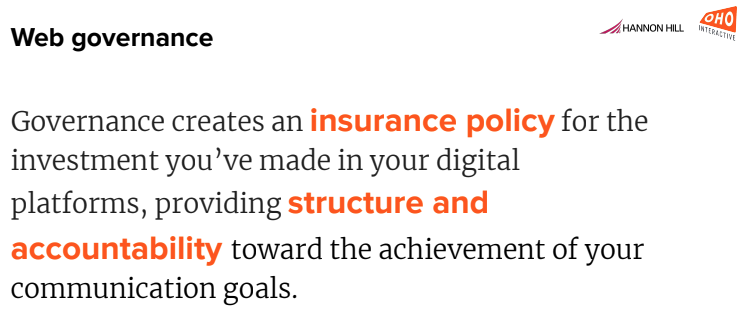
Web governance encompasses the systems, processes, and policies that manage and maintain an organization's digital presence in an orderly and purposeful manner.
"Governance creates an insurance policy for the investment you've made in your digital platform, providing structure and accountability toward the achievement of your communication goals." - Georgy Cohen
It involves establishing clear roles, responsibilities, and procedures to guide digital initiatives.
This framework ensures that activities on digital platforms such as websites align with the organization's communication goals and overall strategy.
By setting governance structures, organizations can create accountability, enhance efficiency, and optimize the use of resources across their digital landscapes.
Through web governance, organizations aim to prevent chaotic digital practices by regulating content creation, access permissions, and the deployment of digital projects, ensuring that each element supports the strategic objectives and effectively engages the intended audience.
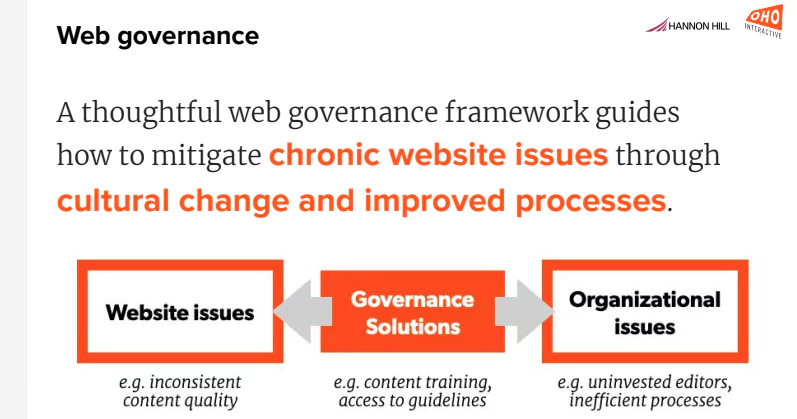
Web governance on higher-ed websites is crucial to ensuring that an institution's digital presence aligns seamlessly with its organizational goals and user expectations.
Traditional practices, where "this is the way we've always done things," often clash with modern needs for agility and user-centered design.
Many higher education institutions grapple with legacy platforms and outdated processes that have been in place since their websites were first launched, sometimes as far back as the 1990s.
These entrenched practices can create significant challenges in adapting to current digital standards.
“Web governance isn't just about setting limits and restricting abilities and access. It's also about educating and empowering your content creators." - Kat Liendgens
Understanding the key elements of web governance can greatly assist organizations in making informed decisions about their digital strategy.
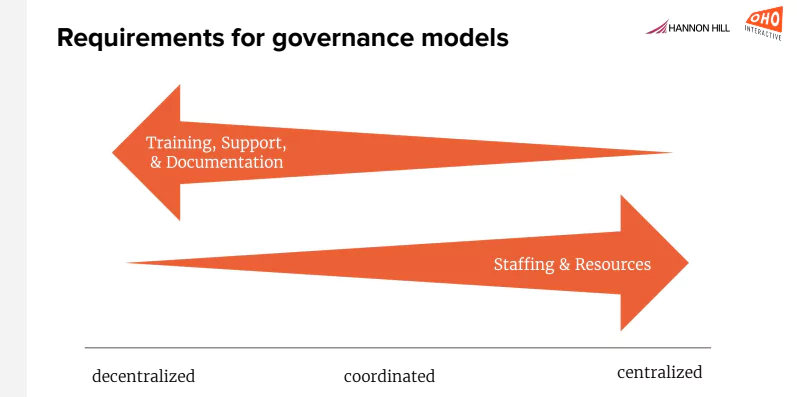
The governance model determines how a website is managed, ranging from centralized to decentralized models.
Centralized models involve a specific team managing all aspects of the website, ensuring uniformity across digital outputs.
Decentralized models distribute responsibilities across departments, promoting specialized content but requiring careful coordination to maintain coherence.
Hybrid approaches mix both, with some aspects managed centrally and others distributed.
Success in any model requires appropriate resources, support systems, and a strong connection to the overall brand.
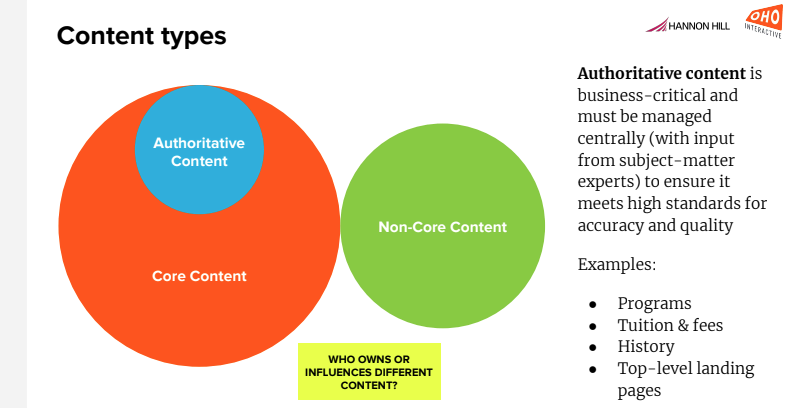
Determining the hierarchy of content based on business importance is crucial.
Authoritative content like tuition fees and program descriptions must be centrally managed due to its critical nature, ensuring accuracy and quality.
Core content, such as admissions, may be managed by specific departments but follows organizational guidelines.
Non-core content, such as parking services, requires less oversight but still needs basic support to meet general standards.
This strategic categorization helps maintain a balanced and effectively managed website that aligns with organizational objectives and user needs.
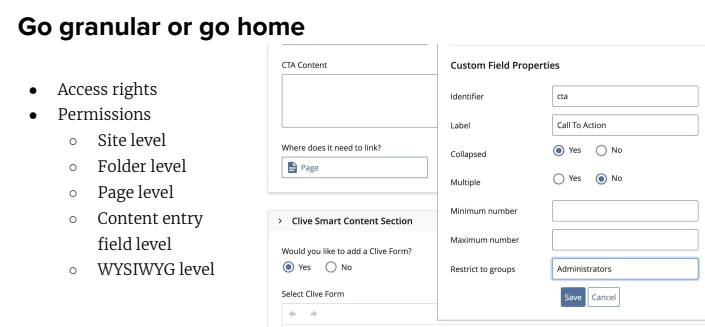
Cascade CMS plays a crucial role in implementing web governance by offering tools that:
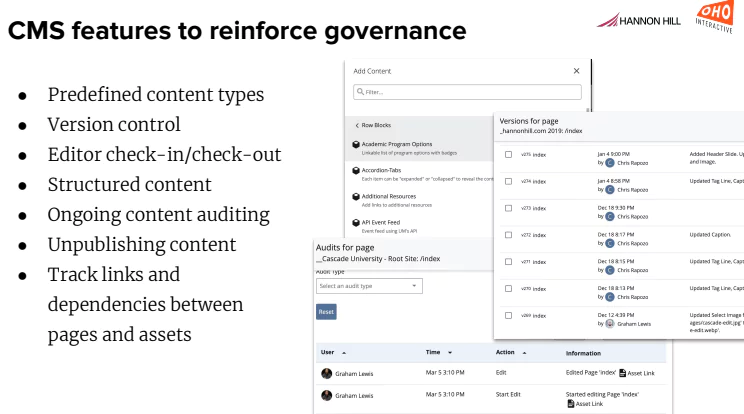
The following include some of the features within Cascade CMS that reinforce web governance:
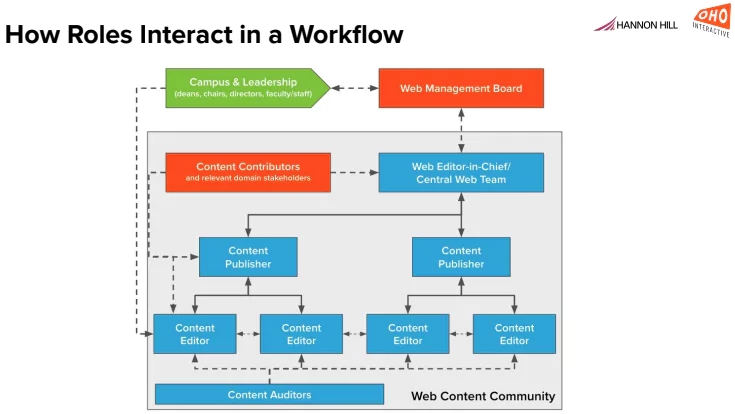
In web governance, defining roles and responsibilities is critical to ensure efficient website management and maintain high standards of content quality.
Below is a streamlined approach to understanding roles within web governance:
By clearly defining and managing roles and responsibilities, organizations can create a structured environment that supports effective web governance, leading to a more coherent and user-focused digital presence.
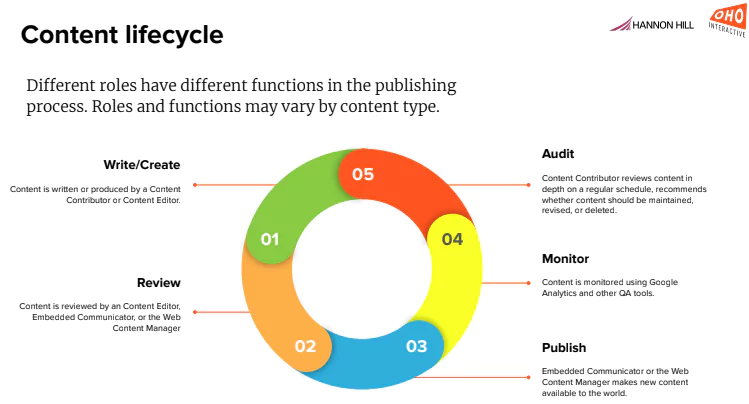
The publishing workflow is a structured process that guides content creation, review, approval, and management.
Here's how this process typically unfolds:
This structured approach helps ensure that content aligns with strategic goals, maintaining the integrity and efficacy of the website.
Ensuring high content quality is a pivotal component of web governance.
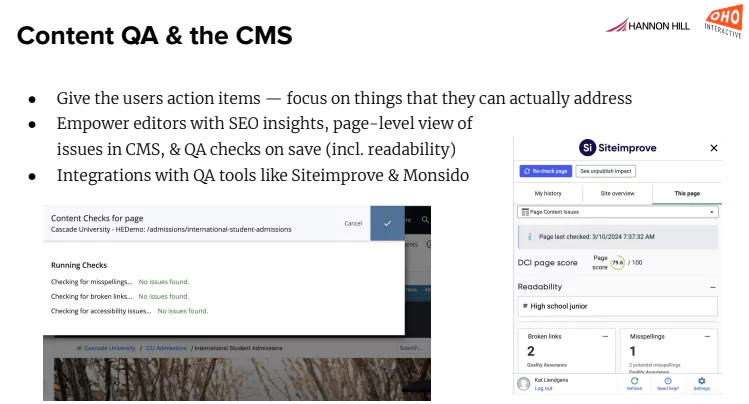
Here are key strategies to maintain and enhance content standards:
Kat Liendgens emphasizes the importance of actionable feedback in quality assurance, stating,
"You always want to show your users action items. You don't ever want to overwhelm your users with reports that point out issues they can't do anything about. We call this technical terror, and we want to avoid that to encourage buy-in to your web governance strategy."
This approach ensures that contributors understand the issues and are equipped to address them effectively.
Effective web governance relies heavily on comprehensive training, clear guidelines, and a supportive community.
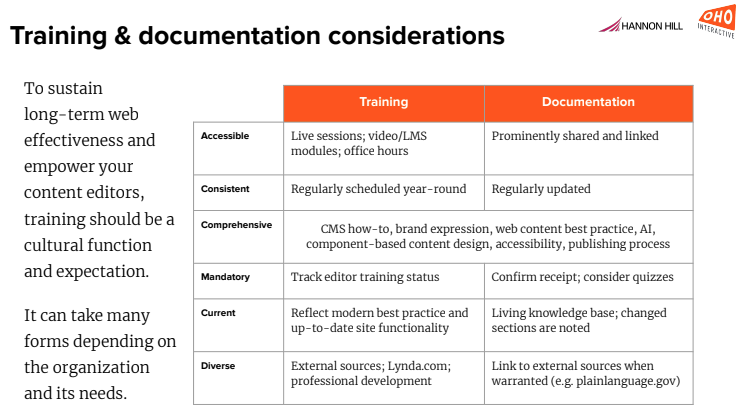
These elements are critical to ensuring that all team members understand and can effectively contribute to the organization's web initiatives, regardless of their role.
Georgy Cohen emphasizes the importance of training being a cultural expectation:
"Training should really be a cultural function and expectation around the web, regardless of the size of your team."
By integrating training, guidelines, and community into web governance, organizations can enhance the effectiveness and cohesion of their web operations, leading to a more robust and aligned digital presence.
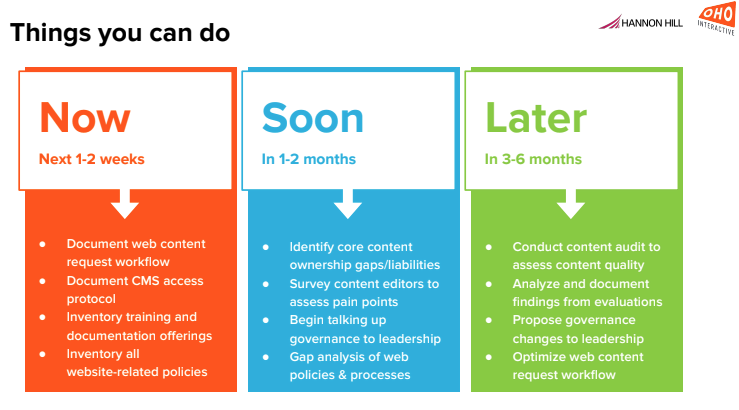
If you're looking to bolster your web governance or unsure where to begin, here are practical steps to get started:
Georgy Cohen emphasizes the importance of taking the initiative:
"You can't boil the ocean. You just gotta pick one corner and start there."
As you've learned, effective web governance is crucial for the success of higher education institutions in the digital age.
By establishing clear rules, roles, and processes through tools like Cascade CMS, institutions can ensure their websites are compliant and compelling and effective communication tools.
To discover how Cascade CMS can elevate your institution's web governance, fill out the form below to learn more and watch the webinar today.
Last Updated: May 9, 2024 11:00 AM